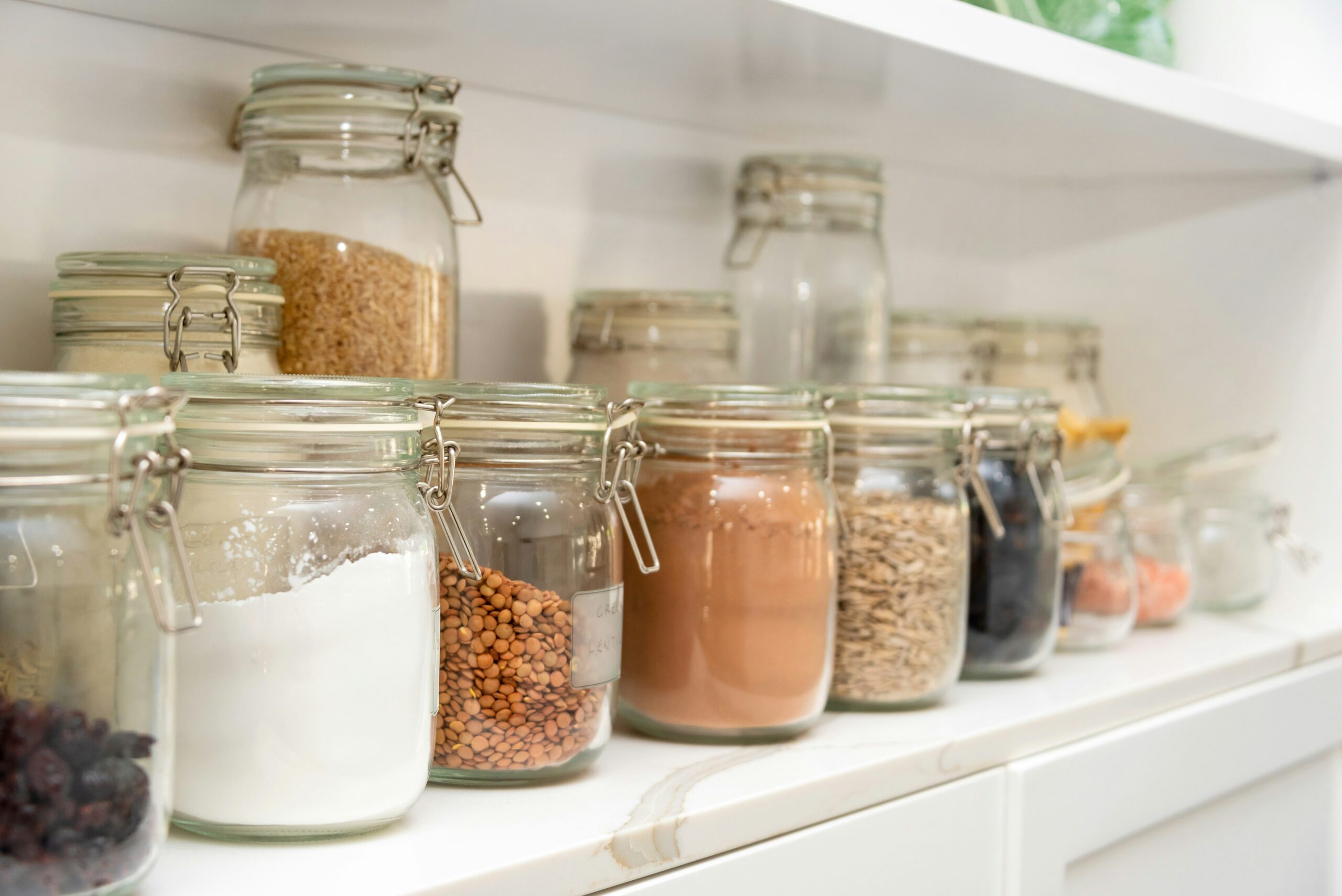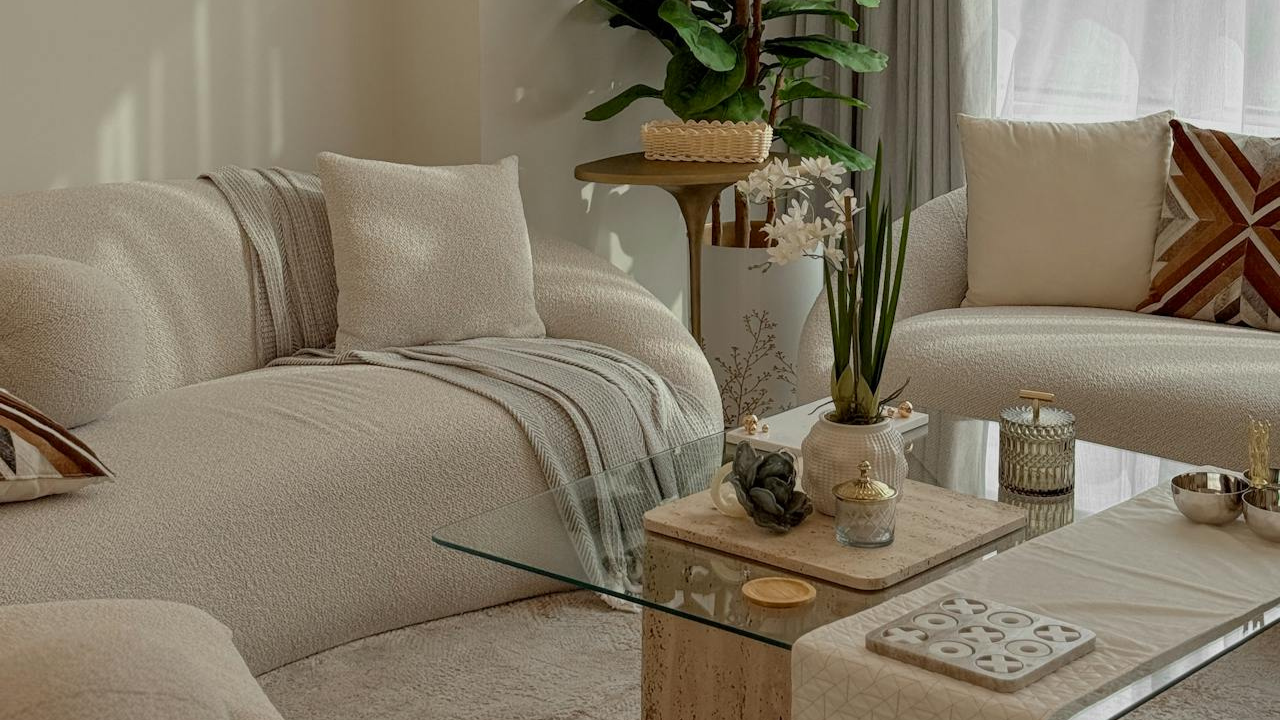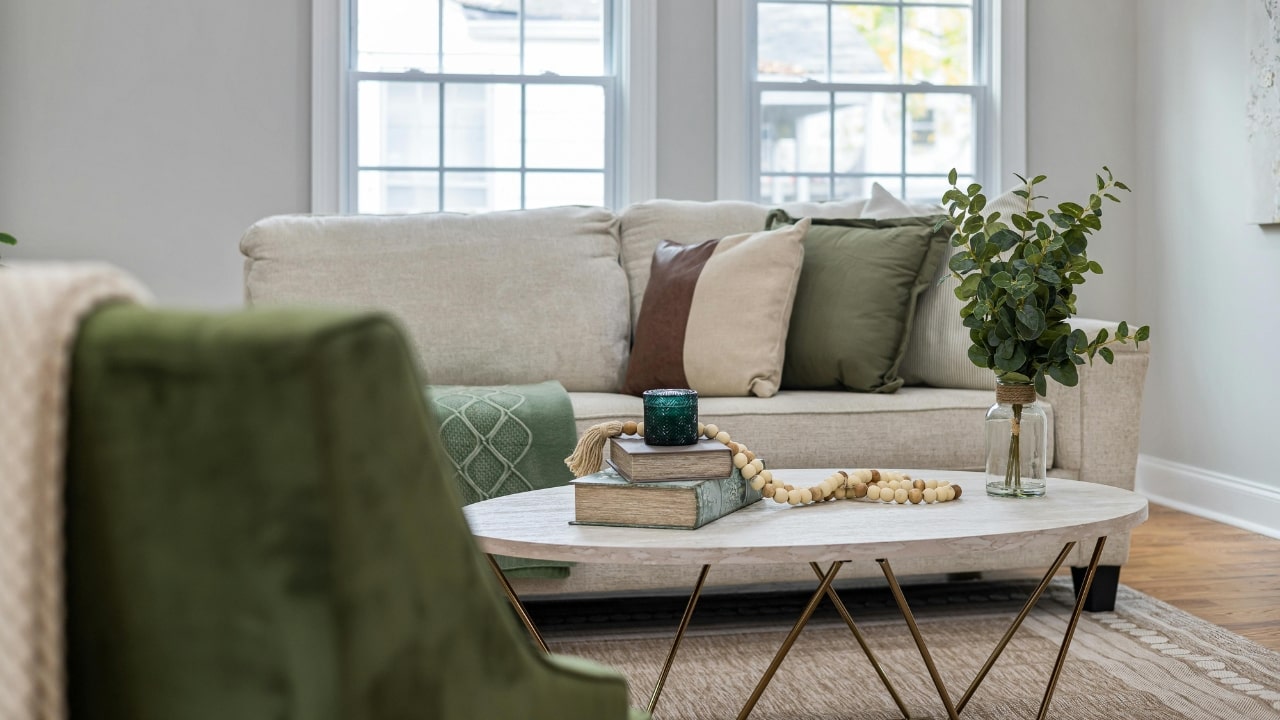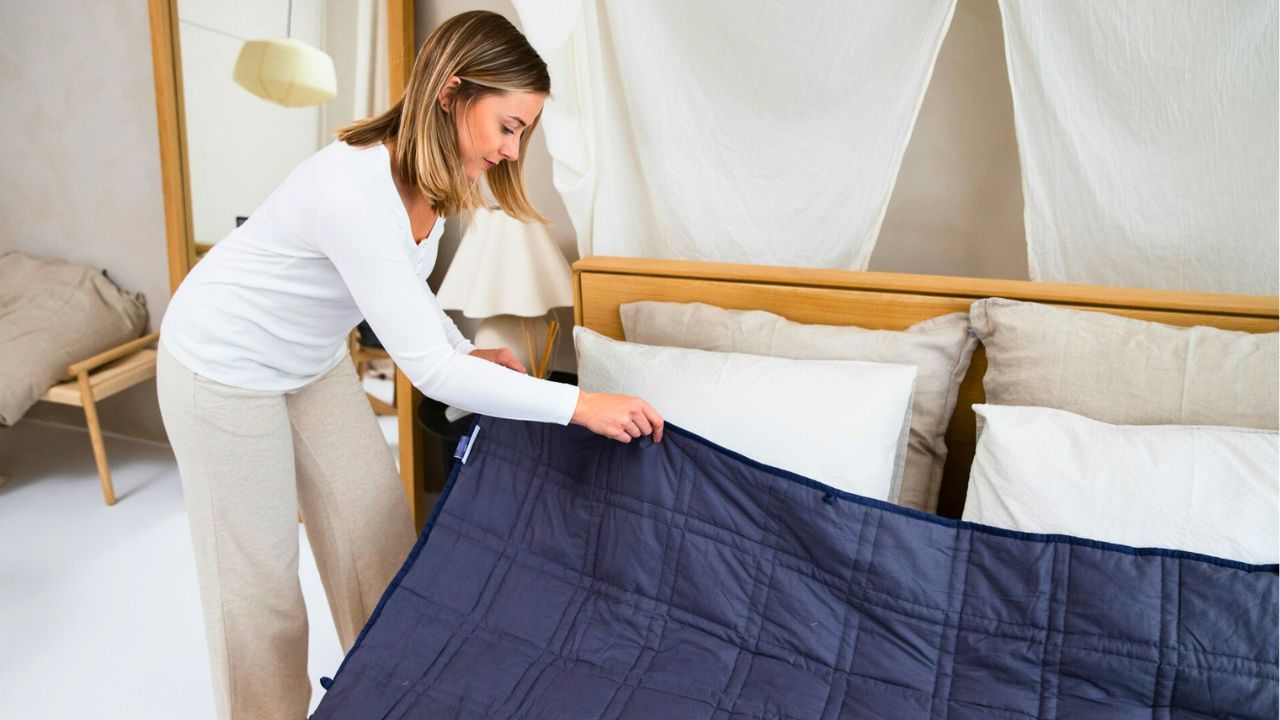11 things to fix if your home feels visually cluttered
If your house still looks busy when you’ve cleaned, you’re dealing with visual clutter—too many finishes, short curtains, floating rugs, loud labels, and nowhere for the daily stuff to go. Clean lines and better boundaries fix it fast.
Too many finishes fighting each other

Black, chrome, brass, and copper in one view make the eye work overtime. Pick two per room and repeat them with intention. Group any outliers together so they read as a set, or move them to a closed room. Quiet repetition is how budget pieces start to look like a plan instead of a yard sale.
Short curtains and skinny rods

High-water panels chop a wall and tiny rods look temporary. Mount rods near the ceiling, extend them past the window, and let panels kiss the floor. If you’re an inch short, add clip rings or a bottom band. That extra length is the cheapest “ceiling raise” you’ll get, and it makes the entire wall read finished.
A rug that doesn’t catch front legs

When furniture floats off the rug, your focus floats too. Size up or layer a large natural-fiber base under your favorite patterned rug so the front legs of every major piece land on the field. The moment the group connects, the room calms and starts acting like one conversation.
Scattered micro art on big walls

A dozen tiny frames make walls feel busy and young. Go larger and fewer, centered over furniture with bottoms aligned so the eye can rest. If you love a gallery wall, keep frames and mats consistent so the order carries the look. Art shouldn’t feel like visual confetti.
Labels yelling from every surface

Pantry boxes, soap bottles, and bright packaging break your palette. Decant into clear jars and plain pumps, then store refills in a labeled bin behind a door. You’re not trying to be precious—you’re removing noise so the materials you paid for (wood, stone, paint) can actually show up.
No boundaries on daily surfaces

Remote, keys, pens, mail—nowhere to land—and suddenly every counter is a pile. Give each hot spot an edge: a tray on the coffee table, a runner on the dresser, a board by the range, a lidded bowl by the door. Edges stop drift. The same amount of stuff looks intentional when it’s contained.
Lamps and bulbs that fight the room

Mixed color temperatures plus only-overhead light equals glare and chaos. Standardize to warm bulbs and add lamps at sitting height so faces are lit from the sides. One dimmer where you live at night changes the whole mood. Good light is half the “expensive” feel.
Bulky pieces bunched together

A skirted sofa, solid ottoman, and a closed cabinet in the same corner will weigh a room down. Swap one piece for something with visible legs or move a leggy chair into that view so you see more floor. Air under even one piece makes the whole wall breathe.
Mismatched lines and heights

Art floating too high, lamps too short, and side tables below the arm create jittery sightlines. Center art over furniture and keep the bottoms aligned. Raise lamps with stacked books if you must, and aim tables to meet the arm height. Clean lines read “finished” even when the furniture didn’t change.
Hallways and entries without a landing zone

Bags, shoes, and mail spill because there’s nowhere to go. Add a bench or console, hooks at the right height, a lidded tray for keys, and a boot tray. The goal is obvious parking spots. Once those are in place, the clutter disappears without you decluttering every afternoon.
No nightly reset ritual

Styled rooms don’t stay styled by accident. Every evening, fold the throw, fluff pillows, clear the tray, and click the lamps to warm. Five minutes keeps the lines you worked for, and you wake up to a house that’s still “done” instead of starting at zero again.
Like Fix It Homestead’s content? Be sure to follow us.
Here’s more from us:
8 upgrades that look like you spent thousands (but didn’t)
9 small changes that instantly make a house feel high-end
*This article was developed with AI-powered tools and has been carefully reviewed by our editors.







